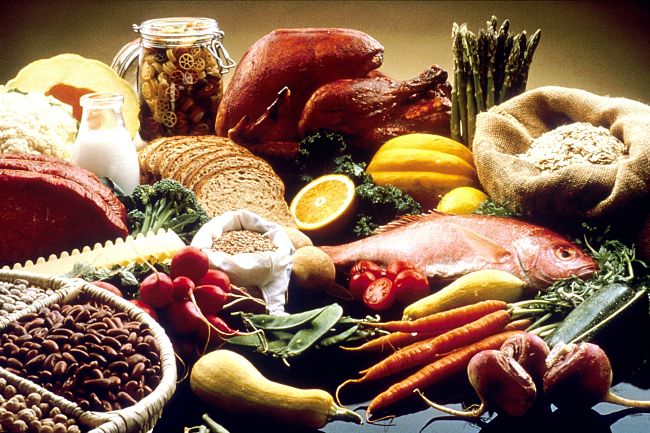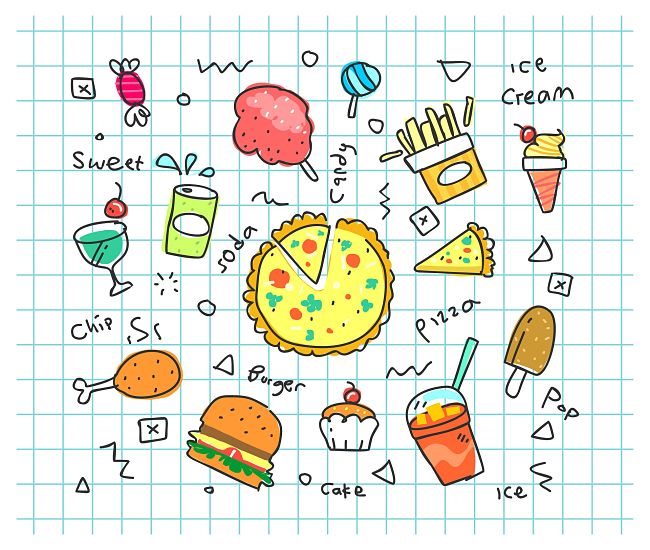Danger Food Combos for Middle Age Mortality and Heart Disease Risks
It is generally assumed that eating too much sugar and saturated fat are probably unhealthy and pose high risk factors for heart disease and early death in middle age. However, so far, large definite studies on the danger foods, and food combination for middle age mortality and heart disease have been lacking, so the evidence is inconclusive.
A new major study, by the University of Oxford with a huge data set over a long period of time has finally provided some answers.
The findings were published online in BMC Medicine.The study used the UK Biobank, a database of about 117,000 UK adults from the United Kingdom who joined the study in the years from 2006-2010. The subjects were between 37 and 73 years of age at the time.
These people self-reported their diets several times during the course of the study. The researchers divided the subject's diets into key food groups and nutrient. Deaths were recorded from hospital and death registry records. These mortality data were used to calculate rates of heart disease and death associated with various diets and food consumption practices.

The subjects were grouped by the food groups they ate. The study enabled food combos to be studied as well as single foods and nutrients. This was important because there is a lot of research and evidence on single nutrients. However, people do not eat nutrients, nor do the solely eat problem food items. People eat combinations of food, food groups and types of foods. Telling people to reduce their sugar consumption can be hard to follow as people don't eat a cup of white sugar at a sitting. It is how the food is combined into eating patterns and food groups that is more important - such as sugary drinks, sweets, cakes and chocolate.
The major findings from the study were:
- People with diets with high consumption rates for chocolate, candy, sweets, butter and white bread had a 37% higher risk of early death and 40% higher risk of heart disease.
- People who consumed high levels of sugary beverage such as fruit juices and soft drinks such as cola had an 11% higher risk of death, and about a 14% higher risk of heart disease.

The importance of this study is that it focused on danger foods such as confectionery [candy], chocolate, white bread, butter and high-fat cheese. This is easier to understand than simply talking about sugar and fat. People who had diets which were high in these danger foods, and low in vegetables and fruit, were found to be more likely to die prematurely and develop heart disease in middle age. Primarily, these bad diets cause them to gain excess weight, increasing their risk of developing heart disease.
Danger Food Pattern 1
Overall, this study showed that diets high in:
- chocolate and other types of sweets and confectionery,
- butter,
- refined bread,
- table sugar,
- preserves
AND with low intakes of
- fresh fruit,
- vegetables,
- wholegrain foods
were associated with an increased risk of heart disease and all-cause mortality,
Danger Food Pattern 2
Researchers also found that diets particularly high in
- sugar-sweetened beverages,
- fruit juice,
- table sugar and preserves
were risk factors for premature mortality and heart disease.

The importance of animal-derived lipid spreads such as lard and butter is less clearly defines as an outcome. There was a positive association with the poor outcomes with Dietary Pattern 1, but a negative association with Dietary Pattern 2. This reflects the ongoing debate about the role of saturated fatty acids from dairy products, rich in fatty acids such stearic acid, which appear to have less potential for promoting the formation of fatty deposits in the arteries than foods rich in other, longer chain, saturated fatty acids.
It suggests that, currently, dietary advice to lower saturated fatty acids in the diet should focus mostly on non-dairy food sources of saturated fat, such as red and processed meat, as well as chocolate and confectionery, which are consistently associated with poor health outcomes.
Overall, this study suggests that energy-dense diets with high consumption of free and processed sugars, but low intakes of fruit, vegetables and fiber (Dietary Pattern 1), and animal fats may boost the risk of heart disease and mortality.
Additionally, a dietary pattern that is very high in free sugars, even if low in animal fats and saturated fatty acids (Dietary Pattern 2), can also potentially increase heart disease and mortality risk.
Other foods that have been claimed to be less healthy and a risk, such as savory high-carb snacks, breaded fried fish and processed red meats such as ham, salami and bacon, also feature in this study, but contributed to a lesser extent that other food groups.

The major strengths of this study was the very large sample size, the long duration and the linkage to medical records that clarified the outcome. Focusing on the food groups which have the highest or lowest associations, public health planning can better target and recommend 'good' and 'bad' food groups with the highest potential to improvement in health outcomes. Although study involved people from Britain it is highly likely that the findings apply universally.
